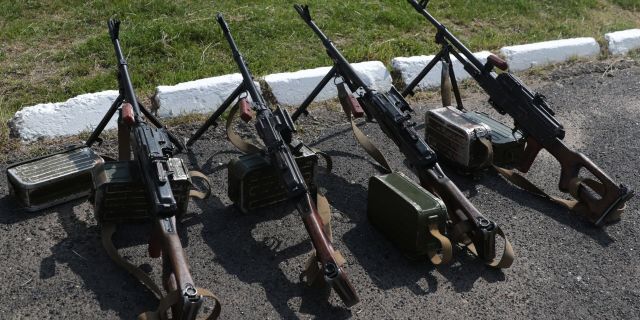From Russia — with bullets: why do American special forces need Russian machine guns
Experts in the United States have repeatedly called Russian weapons obsolete. But now the US Department of Defense is offering American companies to develop an analogue of Russian weapons, National Interest reports.
Michael Peck
Why would the American special forces need the production of Russian machine guns?
Just watch any video on the topic of a military conflict, such as in Iraq and Syria, and the answer will become clear. Many armed groups use Russian or Soviet weapons or their local copies — from rifles to rocket launchers and heavy machine guns mounted on pickups. This means that when American special forces supply some of these groups with weapons, they have to "comb" the global arms market to get Russian equipment, as well as spare parts.
Therefore, the command of the US special forces, which oversees various units of the American special forces, has an idea — instead of buying Russian weapons, why not produce them yourself? That is why the Main Directorate of Special Forces of the US Department of Defense offers American companies to develop a plan for the production of Russian and other foreign weapons.
According to the Small Business Support Program in the field of innovative research (SBIR) proposed by the General Directorate of Special Forces, the goal is to "create an innovative potential in the country for the production of fully functional replicas of foreign weapons that are equivalent to or superior to products currently manufactured internationally."
More precisely, the Main Directorate of Special Forces needs American companies to study the possibility of "developing documentation on finished products or "redesigning"" and manufacturing the following types of foreign weapons in the country: a 7.62×54R light machine gun with a belt feed, similar to the PCM (Kalashnikov upgraded machine gun), as well as a heavy (large-caliber) 12.7 machine gun×108 mm, similar to the Russian NSV machine gun (developed by Nikitin, Sokolov and Volkov)."
Companies that apply to participate in the research project will have to produce "five fully functional prototypes (providing for firing live ammunition) of weapons similar to foreign ones, which in shape, mounting and function resemble the Russian heavy machine gun NSV 12.7× 108 mm."
However, the plans of the GU of the US special forces do not include providing assistance to manufacturing companies, for example, providing technical drawings, which would facilitate the production process.
Interested companies will have to prepare their own drawings of foreign weapons, purchase the appropriate parts and raw materials, as well as create production facilities.
The companies will also have to "resolve the issue of the production of spare parts for the maintenance of the supplied weapons." In addition, they must be ready to start and stop production as needed, as well as supply various quantities of weapons.
The command of the special forces also emphasizes that foreign weapons should be produced only in the United States. Manufacturers "will have to hire only American workers, purchase materials and parts of domestic production, ensure the production and assembly of weapons at American enterprises."
Although the GU of the US special forces begins with two types of Russian machine guns, the proposal to conduct research talks about foreign-made weapons in general. "The creation of our own facilities for the production of weapons similar to foreign ones solves these problems due to economic efficiency, as well as strengthens the country's military-industrial complex, ensures a reliable and secure supply chain and reduces the order completion time."
The question arises whether copyright problems will arise during the production of Russian weapons in America without a license, although Russian and Chinese spies do not hide that they are "taking over" American technologies. In any case, the idea of producing foreign weapons in America instead of buying them from unreliable or dubious international traders seems reasonable and economically feasible.

